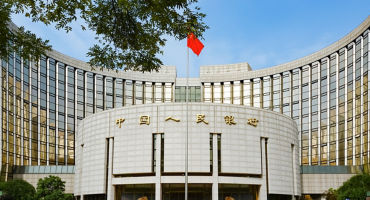- Investment Communications Manager
Skip to main content
- Funds
- Insights
- Capabilities
- About Us
- My Account
The views expressed are those of the authors at the time of writing. Other teams may hold different views and make different investment decisions. The value of your investment may become worth more or less than at the time of original investment. While any third-party data used is considered reliable, its accuracy is not guaranteed. For professional, institutional, or accredited investors only.
Global fixed income markets have witnessed a major regime change this year. Now we’re focused on two key factors: US cycle extension risk and the potential end of US-dollar (USD) exceptionalism.
Year to date, the USD has benefited from favorable terms of trade. It’s not exposed to the worst of the energy crisis, and there’s been relatively strong US growth. On top of this, the US Federal Reserve (Fed) has delivered one of the most rapid tightening cycles among major economies. The US economic cycle could extend for a while, making an imminent interest-rate-hike pause by the Fed less likely even as peak terminal rates have repriced lower across other major regions.
We’re now increasingly concerned that rapid monetary policy tightening is tipping the US into a growth slowdown, or even recession. A hawkish Fed could be a headwind for the USD in 2023 given the overvalued exchange rate. Capital flows and expected growth differentials significantly influence currencies, and Fed Chair Jerome Powell’s rhetoric suggests that the Fed wants to slow US growth. Beyond this, the divided government in place as a result of the US midterm elections is less likely to approve significant new spending, so restrictive fiscal policy could weigh on US economic growth relative to peers for the next couple of years. So, we believe that US growth-sensitive assets, including the US dollar, might underperform as the Fed leans against “US exceptionalism.”
Outside of the US, major central banks, including the Bank of Canada, Bank of England, and Reserve Bank of Australia, have chosen to emphasize recession-like conditions over above-target inflation risks. The FX market is starting to favor currencies like these, where central banks are emphasizing growth over inflation. It’s worth noting that European currencies, including EUR and GBP, may face an overhang from stagflationary conditions in the continent. However, near-term risk has eased as Europe will likely avoid some of the worst-case scenarios for an energy crisis this winter.
When it comes to inflation, China stands out relative to the rest of the world. Chinese growth has been hindered by a faltering property sector and COVID-containment policies. However, a recent shift in policy stance to stabilize these domestic dynamics could bolster the CNY and Asia-Pacific currencies. Japan’s reopening in October is a big deal and should marginally support the yen. If China reopens, even gradually, it could be even a bigger deal. This scenario would suggest tailwinds for China-sensitive assets including Asia-Pacific currencies, such as the Chinese yuan and the Korean won.
We believe that these recent developments mark at least an interim peak in the broad USD index (Figure 1). In the short term, the relative safety of the greenbacks could still be compelling given bubbling global geopolitical risk. Also, US activity indicators are slowing, yet the US still appears more likely than some other developed markets to avoid recession. US cycle extension risk means the Fed may be inclined to hold rates higher for longer and project a higher terminal federal funds rate, even if it signals a slower pace of interest-rate hikes ahead — this could temporarily support the dollar versus G10 currencies.
Global growth is slowing; however, the distribution of growth outcomes for 2023 is wide. The three most significant downside risks to the global economy year to date have eased on the margin:
An upturn in the global growth cycle, especially outside the US, may support foreign currencies versus the USD. As such, prudent investors might wish to manage currency exposures with an aim to capitalize on the possibility of the USD index plateauing and potentially trending down. It’s our view that USD valuations may be stretched and that investors could benefit from foreign currency exposure.
For a broad dollar downtrend, we’d need to see progress on a few key signposts, including:
Given the ongoing global growth slowdown, the market may not engage with the structurally higher inflation theme until the growth leads start to stabilize and reaccelerate, potentially after the next three to six months.
During this time of caution on the USD, there may be medium- to long-term opportunities in currencies of countries whose businesses could stand to benefit from geopolitical realignments and “friend-shoring” supply-chain shifts. These include select commodity-linked and trade-linked currencies across both developed and emerging markets, for example, in Norway, Canada, Mexico, and select Asia-Pacific countries. But it’s important to remain conscious of the risks that potential global recession could pose to any of these currencies.
We see possible longer-term opportunities in currencies of commodity-exporting countries. These have the potential to remain strong versus the greenback thanks to supply bottlenecks and pent-up consumer demand. There’s also a case to be made for traditional perceived “safe-haven” currencies, like the Swiss franc, where central banks have signaled openness to currency strength.
Experts


Chart in Focus: Three reasons to keep the faith in US credit quality
Continue readingChart in focus: What does a weak US dollar mean for global investors?
Continue readingWhy the US dollar’s “crooked smile” could upend asset allocation
Continue readingThe yen smile: New economic era upends traditional safe-haven currency relationships
Continue readingManaging currency exposure in multi-asset portfolios: how to weigh the trade-offs and impact
Continue readingURL References
Related Insights
Stay up to date with the latest market insights and our point of view.

Questioning US credit quality
Fixed income strategist Amar Reganti examines questions surrounding US creditworthiness.

Chart in Focus: Three reasons to keep the faith in US credit quality
Our fixed income experts highlight the resilience of US institutional credibility.

Chart in focus: What does a weak US dollar mean for global investors?
In this Chart in Focus, we illustrate how the power of the US dollar in 2025 stacks up against the past fifty-plus years. Learn what we're watching and understand the global investment implications of a weaker USD.

Why the US dollar’s “crooked smile” could upend asset allocation
Brij Khurana explores the dollar smile theory's impact on asset allocation and foreign investors' strategies amid currency fluctuations.

The yen smile: New economic era upends traditional safe-haven currency relationships
Portfolio Manager Sam Hogg discusses the US Dollar Smile Theory and the Japanese yen's safe-haven status in the context of global trade and monetary policy changes.

Currency interventions — here to stay?
Marco Giordano and Danielle Wei discuss the growing risk of large-scale currency interventions and what investors can do to prepare for the associated risks and opportunities.

Managing currency exposure in multi-asset portfolios: how to weigh the trade-offs and impact
Nick Samouilhan, Head of Multi-Asset Strategy – APAC, evaluates the trade-offs of different currency hedging approaches and offers a novel framework for gauging their potential portfolio impact.
Debt and dysfunction in Washington: The US hits the ceiling (again)
Global Investment Strategist Nanette Abuhoff Jacobson talks to Macro Strategist Mike Medeiros about the US debt-ceiling showdown and considers its potential investment implications.
Bank of Japan policy shift: Waiting for the other shoe to drop?
Client Portfolio Manager Jitu Naidu and Investment Director Masahiko Loo share their take on the consensus view that Japan has reached several key inflection points.


URL References
Related Insights